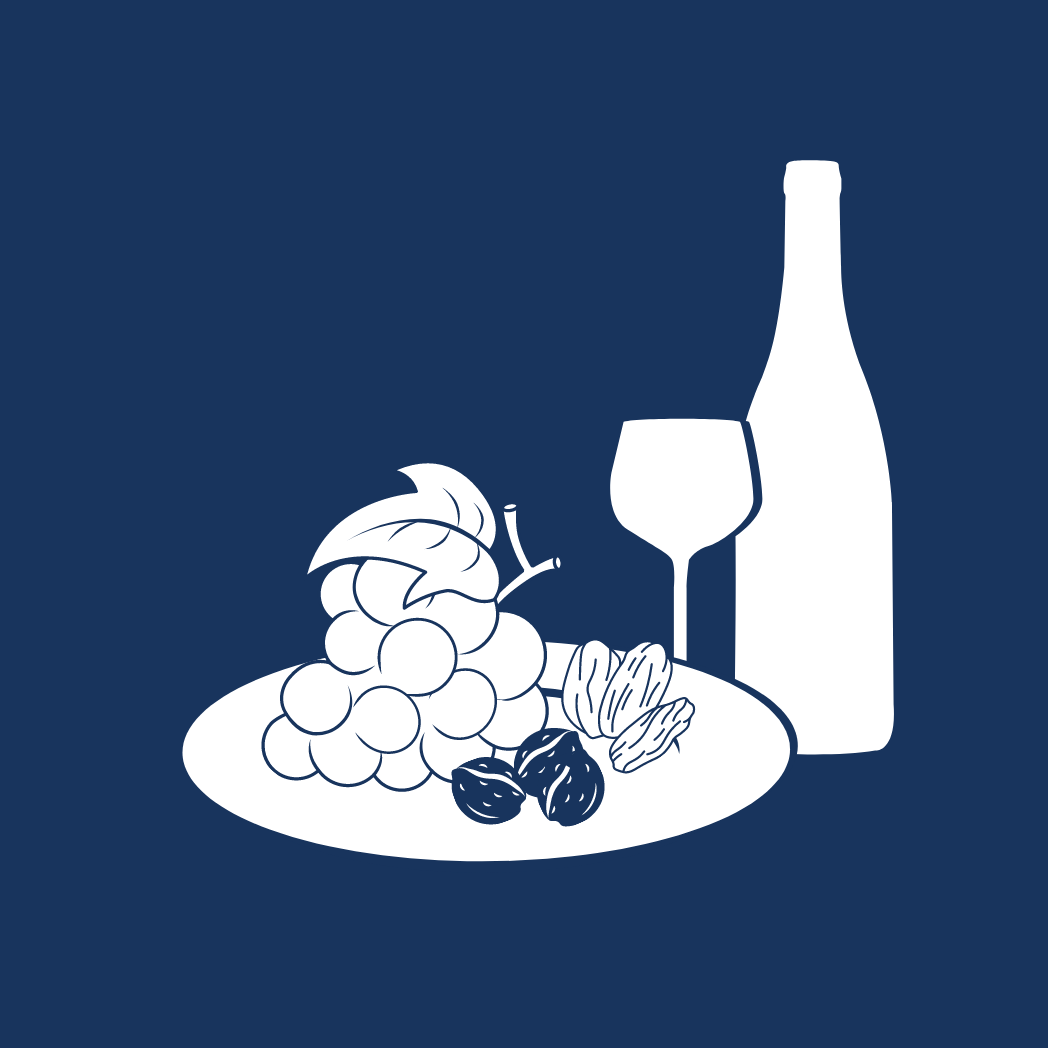
Introduction
The Tu Bishvat seder, modeled after the Passover seder, traditionally includes eating a variety of fruits and nuts and drinking four cups of wine of various colors. The seder has kabbalistic roots and was first mentioned in the book Pri Etz Hadar, written in the 18th century. There is room for much creativity when planning a Tu Bishvat seder, including the choice of foods, readings, and discussions. Popular topics include trees, the environment, appreciating the physical world, examining personal characteristics, and the important role of nature in Jewish texts, traditions, and rituals.
Wine or Grape Juice
Some have the custom of drinking four glasses of wine at the seder. Participants mix each glass to be a different shade from white to red, representing the four seasons, beginning with winter. The order of the wine is white, white with a splash of red, mostly red with a splash of white, and red. The blessing for wine is said before drinking each cup.
Fruits and Nuts
It is common to eat a variety of fruits and nuts at the seder. The fruits and nuts are grouped by their characteristics, such as having a hard shell or the type of seeds. The order of the fruits is as follows:
- Fruits and nuts with a hard shell and soft inside, such as walnuts and citrus fruits.
- Fruits without a protective shell but with a pit in the center, such as olives, cherries, and dates.
- Soft fruits which can be eaten entirely, such as figs, grapes, and star fruit.
- Fruit with a tough outer skin but is sweet inside, such as a sabra or banana.
The blessing for the particular food is said before eating.
Additional Readings
Explanations and poetic readings are often added to the seder. Readings about nature, the environment, the seasons, personal characteristics, Torah learning, and other inspirational topics are often chosen.
Create Your Own Tu Bishvat Seder
Use the Sefaria library to find Jewish texts and readings to enhance your seder. Several complete seders are available in the collection Tu Bishvat Seders. Have you created your own seder? Consider sharing it with the Sefaria community by publishing your sheet. Find instructions for making a sheet on Making a Source Sheet.




